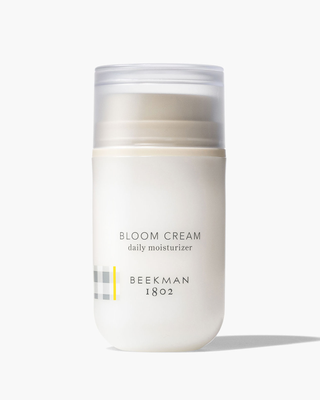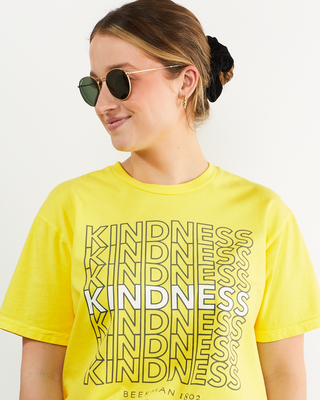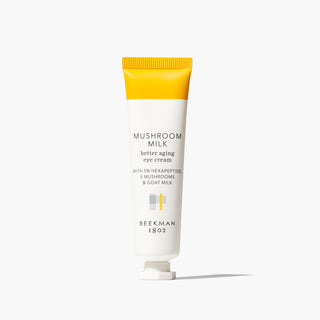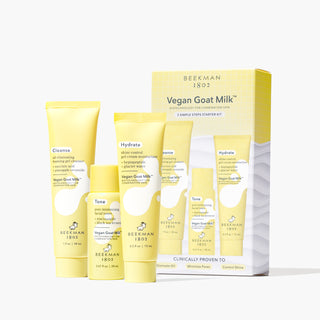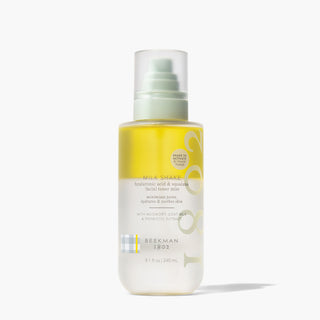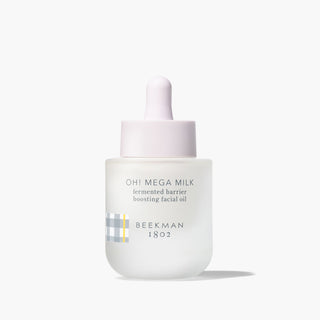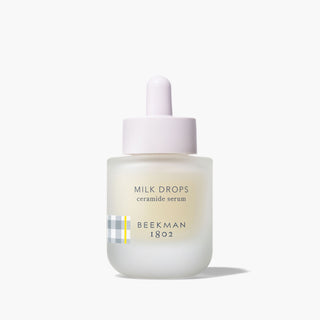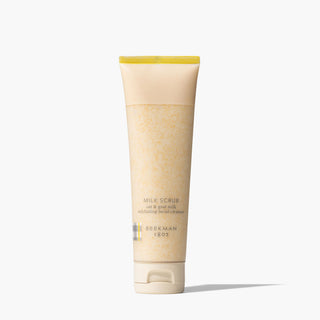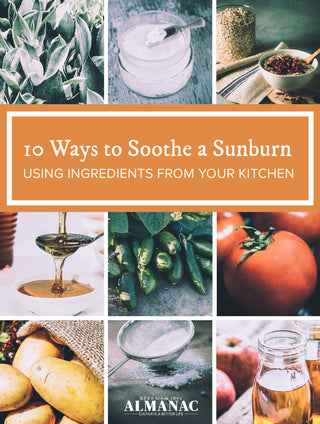Just because we have created our own line of skin care, doesn’t mean we’re immune to mistakes. Long days in the field or the garden and not enough sunscreen leads to that familiar tan line. The Farmer’s Tan. For some, it’s a badge of honor, for some it’s embarrassing. For everyone, it means that we were out in the sun for too damn long. She may think your tractor is sexy, but no one likes to look at a sunburned neck. Not even the most diehard farmer fans among us.
So for days when you are in the first stages of a Farmer’s Tan, Gardener’s Tan, Insert-Cutsie-Name-Here Tan, here are some home remedies to soothe that sunburn.

1. Ice
Of course, we know that when you get too hot, cold things feel good. But there’s more to it than that when it comes to sunburns. What you see when you have a sunburn is your body’s response to too much ultraviolet exposure. Your body inflames, and your blood vessels dilate to try and repair the damaged area. When this happens, your body loses moisture, hydration and will try to shed off the damaged cells, leading to that flaky, peeling skin phase.
When using ice on a sunburn, don’t apply it directly to your skin. Put some cubes in a kitchen towel and use the cold compress to help with the irritation. The cooling sensation you will feel is just a bonus. (You could also put those ice cubes in a summer beverage that will help you forget all your troubles, but that’s most definitely not recommended by the FDA. Just personal experience.)
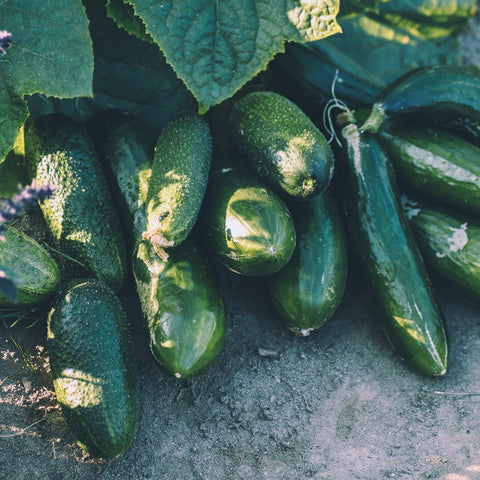
2. Cucumber
Cucumbers are another kitchen item that you can use to fight the inflammation that sunburns bring. Cucumbers are full of good-for-you nutrients like potassium, Vitamins A and C and antioxidants. Cut it up into slices, mash it up or juice the thing and apply it to the sunburn. Put on a fluffy robe, apply your cucumber mash, and it’s almost like you’re at a spa. Except without the pricey treatments and glowing skin. And the nice wait staff. And…ok. It’s not a spa, but try and be optimistic.
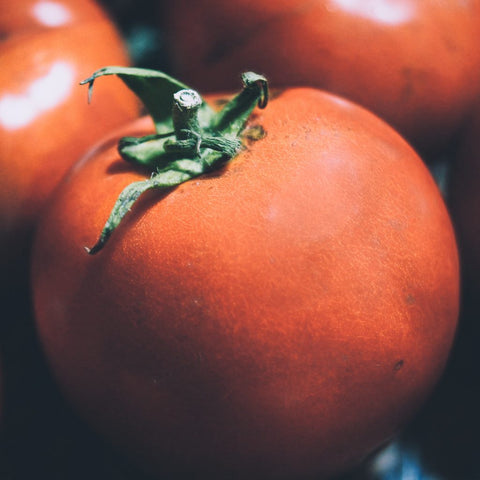
3. Tomato juice and buttermilk
We know it might sound kind of gross. But you’re looking around your kitchen for remedies instead of just going to the store — you can’t be choosy now. Take a ½ cup of tomato juice and 3 cups of buttermilk and mix them in a large bowl or your bathtub. Then go ahead and dunk your body into this very weird soup. (Maybe grab that icy drink from earlier to help you forget how disgusting this sounds.)
Why does this work for sunburns? It’s the one-two punch of lycopene and lactic acid. Lycopene from the tomato juice is an important nutrient that helps your skin protect itself from ultraviolet rays and helps alleviate redness. The buttermilk provides the lactic acid, an alpha-hydroxy acid that helps the body shed dead skin cells quickly and, most importantly, gently. That gentle exfoliation is why lactic acid is one of the main ingredients in our Triple Milk Peel. The lactic acid will help speed up the peeling stage of your sunburn, leading to faster healing overall.

4. Aloe Vera
Aloe Vera is a kitchen classic. This low maintenance plant is great for all kinds of burns. It also needs little attention and is incredibly hard to kill. So even if you are the worst plant parent in the world, you can still have this natural first aid kit ready in the wings for when things go wrong.
The burn fighting powers of Aloe Vera lies in its leaves. Snip off a piece of the plant and apply the gel contained in the leaf onto your burn. Aloe Vera gel heals your body on the epithelial level of the skin, which is the layer of cells that cover your body. The nutrients and antioxidants in the gel help speed up your skin’s healing process. And don’t worry about the plant. Aloe Vera plants are like starfish, if you cut a part of it off, the missing part grows right back.

5. Potatoes
Beggars can’t be choosers. It may seem weird to grate up raw white potatoes and apply them to your burn like a poultice, but if it was good enough for Meemaw and Pop-Pop, it’s good for you too. Potatoes have been a home remedy for burns for hundreds of years, and for a good reason. The starches in potatoes are great for alleviating the pain and stinging sensation that comes with having a bad burn.
You don’t need to grate a potato to get the benefits. You can also take a slice and apply it to your burn. In a real pinch, you can also take equal parts crushed ice and instant mashed potatoes and apply the mixture to the burn. Just make sure you stay away from your pets during this process. After all the cucumbers, tomatoes and potatoes, you’re going to start smelling like a tasty snack.
![]()
6. Apple Cider Vinegar or White Vinegar
Don’t apply vinegar to burns that have started to blister. You’re going to have a really bad time. This treatment is best for mild sunburns. Apple cider vinegar and white vinegar both contain acetic acid. This acid acts similar to ibuprofen or aspirin and can topically help with pain and inflammation. To feel the effects of acetic acid, take a cotton ball soaked in apple cider or white vinegar and dab it all over your sunburn. The pain-relieving effects of acetic acid will work for about 20 to 30 minutes. Apply as needed.
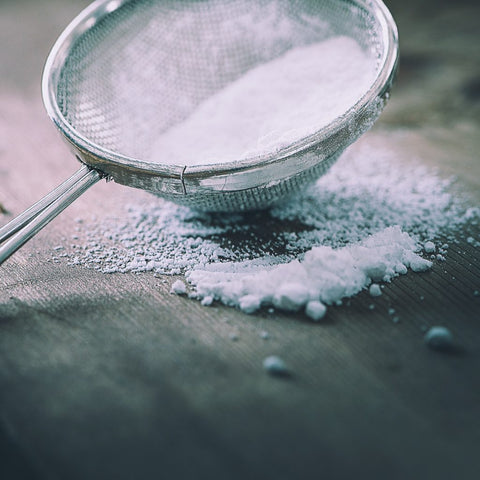
7. Baking Soda
Baking soda works for burns because it can help balance the pH levels in your skin. When those levels are balanced, it will help with the pain, inflammation, and redness that came with your newly acquired sunburn.
To quickly see the benefits, mix baking soda with a few tablespoons of water to form a paste and gently apply that directly to the skin. Let the paste sit for 10 to 15 minutes and wash off. Baking soda can be harsh to your skin, so make sure that when you are washing off the paste, you are doing so gently and avoid rubbing the mixture into the burn. Another method is to add ¼ cup of baking soda into a cool bath and soak yourself for 15 minutes.

8. Oatmeal
Oatmeal is full of these magical fibers called beta-glucans. Beta-glucans is a soluble fiber that naturally occurs in oatmeal. It has natural anti-inflammatory properties and helps ease the pain and redness of your burn.
What type of oatmeal is the best for sunburns? Truly, any will do (except for the sugary stuff that comes in a packet. Save that for breakfast.) But the least processed the oatmeal, the better. We recommend old-fashioned (also called “rolled”) or steel-cut oats. You can make a quick paste of oatmeal and milk and apply that to your burn. Milk, like the buttermilk mentioned above, has that great exfoliating lactic acid that will help slough off the damaged cells. The beta-glucans in the oatmeal will come out in the paste and help soothe your skin.
Another use for oatmeal is to grind it up in a mill or food processor and add it to your bath. This mixture helps soothe dry, itchy and irritated skin, so feel free to use this remedy whenever your skin isn’t feeling its best.

9. Honey
Ooohhh honey, that burn sure looks bad. Good thing we have the sweet stuff around to soothe it. Every kitchen should have some honey in it, even if it’s just to sweeten your tea. Honey is naturally moisturizing, antibacterial and anti-inflammatory. It’s great for all kinds of abrasions and will help soothe your sunburn in no time. Apply a few dabs of honey on the burn and rub it in.

10. Coconut oil
Now we don’t subscribe to the notion that coconut oil is the ultimate cure-all to everything that ails you. But it is really good for sunburns. Part of what makes sunburns so terrible is the tight, dry feeling it gives your skin. It is a side effect of your skin trying to protect itself from the sun damage. When you have soothed the burn and treated symptoms with all the other remedies on this list, it’s going to be time to seriously moisturize. Coconut oil is great for providing deep, skin-penetrating moisture. It’s even better if you are able to mix a few drops of Vitamin E oil into your coconut oil so you’re not only moisturizing on a deep level but providing some antioxidants as well.
So, the next time you’re dealing with a bad sunburn, check your cabinets. You may find the right solution without needing to leave the house. (Or, better yet, just protect yourself before you go outside to begin with!)
